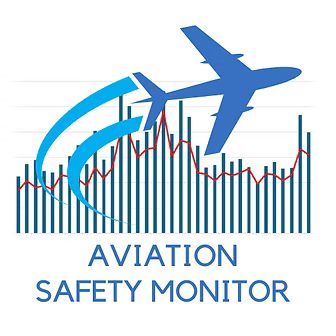How Do We Measure Safety Margins?
The buffer encroachment algorithms do not identify loss of separation events. Instead, they evaluate what would occur if aircraft continued on their current speed and heading. Avoidance of a loss of separation when a buffer encroachment occurs requires action by flight crews and controllers. In many cases, these actions call for the aircraft to follow well-defined procedures accurately and in a timely fashion. In that sense, when the algorithm identifies a buffer encroachment it highlights a situation in which pilots and controllers must operate with a shared awareness of what all aircraft in the airspace will be doing. It is with this understanding that we interpret buffer encroachments as a measure of safety margins in the airspace.
The buffer encroachment algorithms use flight track messages from the FAA’s System Wide Information Management (SWIM) data service. The track data from SWIM consists of asynchronous position reports for all aircraft in the terminal airspace. To calculate the buffer encroachments, the actual aircraft trajectory must be linearly interpolated between any two given position reports. For a given pair of aircraft with piece-wise linear trajectories, a buffer encroachment can occurif any pair of line-segments that constitute the trajectories violate the buffers. The algorithms identify both the occurrence of an encroachment and its duration. The encroachment duration calculation is applied to all pairs of line segments for all aircraft pairs (see Figure 1). The sum of all segment-wise durations gives the total encroachment duration for the airspace. The Aviation Safety Monitor calculates updates of the buffer encroachments and other hazards and metrics every minute. The results are output in five-minute epochs, or time periods.

For the Aviation Safety Monitor, we identify encroachment events under different meteorological conditions according to the Separation Index methodology described by the FAA in its Air Traffic Quality Assurance document [1]. The Separation Index formula, defined in Figure 2, classifies Separation Conformance into four categories that measure the degree of deviation from the separation standard. Separation Conformance is measured by the index S: a value of 1.0 or higher indicates conformance with the standards. A value below 1.0 shows non-conformance, with the degree of non-conformance classified into four categories: Proximity Event, Class C, Class B, and Class A as defined in the table reported in Figure 2.

The 26 airports tracked in the Aviation Safety Monitor are combined into 17 metroplexes when reporting safety margins. Hazard exposure and non-separation risk metrics are tracked and reported for all 26 airports. Many of these terminal airspaces have more than one commercial airport inside the 50-mile radius. To ensure that encroachment events are counted accurately, all aircraft within the metroplex are analyzed simultaneously and reported together. For example, in the Dallas-Fort Worth area, buffer encroachments for DFW and DAL are analyzed jointly and reported out as a single metroplex. Chicago O’Hare and Midway Airport are similarly reported together for the Chicago metroplex.
References
Federal Aviation Administration, “Air Traffic Quality Assurance,” Order JO 7210.56C, Washington, D.C., July 2009.
Huabin Tang, “Tactical Separation and Safety-Alerting System for Terminal Airspace,” Journal of Air Transportation, Vol. 28, October-December 2020, pp. 184-194.
How Do We Measure Safety Margins?

About the Aviation Safety Monitor
The Aviation Safety Monitor provides quantitative estimates of safety margins at 26 airports in 17 metropolitan regions in the United States. This information complements data on several safety-related events that are published elsewhere, with the FAA’s Runway Incursion Statistics website a good example. However, the available safety information can be misleading if it only reports the frequency of violations with no insight into how safety buffers may vary minute-to-minute and day-to-day. The Aviation Safety Monitor aims to provide this insight every week.
